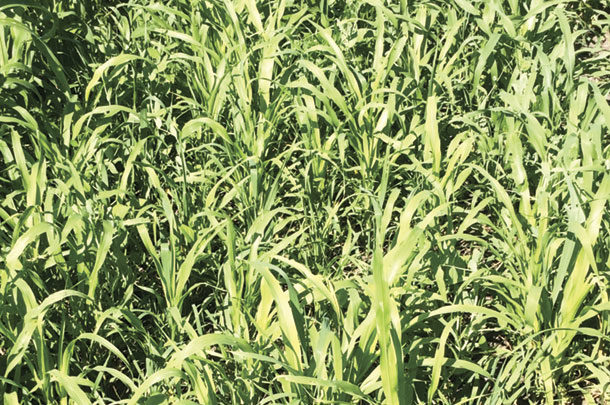Many cover crop species have been used as forage crops for years. This raises many questions about using cover crops as a grazed forage since this seems like the quickest way to recover at least a part of the production costs associated with establishment while also maintaining soil health benefits.
Regardless, if managed as a cover crop only, or as a cover crop with forage production as a secondary outcome, or as a forage crop first with simultaneous cover crop benefits, there are three truisms that can increase cover crop success.
1. Know the herbicide program and read the labels
From a legal standpoint, it is important to know if herbicide restrictions may exist before beginning or expanding cover crop use. First, most herbicide labels list crop rotation intervals or plant-back restrictions that limit how soon a subsequent crop can be planted following an herbicide application.
Second, it is important to note that this is different from the grazing or forage restrictions posted on an herbicide label for crops to which an herbicide is directly applied.
Third, recommendations usually are most restrictive when cover crops are used as a forage source.
If residual herbicides are present, seed germination and seedling vigor could be reduced and result in a failed seeding. Previous herbicide programs should be considered before cover crops are planted following row crop production to eliminate the possibility of poor establishment due to residual chemicals.
2. Use high-quality seed
After noting herbicide restrictions, another critical decision is the cover crop species to plant. Ultimately, this will depend on individual producer goals and objectives. Seed prices could make up a substantial portion of the establishment costs. An establishment cost ranging from $50 to $70 per acre is common when seed, seeding and equipment costs are included. This includes many of the single species cover crops, such as oats or cereal rye, and simple mixtures of oats and cereal rye, or oats and turnips. For some diverse cover crop mixtures, seed cost alone of over $50 per acre is common.
High seed germination and seed purity are two characteristics of high-quality seed. These are required by law for marketed seed and are listed on the seed tag. Reduced seed purity can be caused by inert material, other crop seeds, weeds and noxious weeds. Inert material is usually not a risk to seeding success since it can be easily accounted for by adjusting the seeding rate. For cover crops, other crop seed is also not of much concern, since grain produced from cover crops is not often marketed. However, the presence of weeds and, in particular, noxious weeds pose the greatest threat. Even if seed has been cleaned, weed seed that is similar in size, shape or density can be difficult to remove during the cleaning process.
3. Do not take shortcuts with seeding management
Planting date is the most important seeding factor that affects success. Delayed planting reduces fall growth potential. Likewise, the effects of delayed fall planting on biomass production carry over into the spring. Increasing the seeding rate is not a substitute for late planting. There are numerous studies that suggest for a single species, increasing the seeding rate does not usually compensate for late planting dates.
As a general rule, most cover crops are planted into non-ideal seedbeds. This may reduce some of the potential for a successful seeding. If direct seed-to-soil contact does not occur, seed germination will be reduced considerably. Some species with small seed, such as turnips, do quite well when broadcast onto the soil surface. Likewise, both oats and cereal rye have larger seed but can produce successful stands when broadcast under good growing conditions. Broadcast seeding requires a higher seeding rate than drill-planted cover crops.
It is common for legumes and other forbs to be included in many cover crop mixtures. These generally do not offer the biomass production potential of the grasses, but they can provide additional ecosystem services such as pollinator attractors and biodiversity. Seed size is usually smaller for these species, which means that planting depth should also be shallower. The larger seeded species, such as many of the annual grasses used as cover crops, can be planted as deep as 1½ inches. The smaller seeded species should be planted no deeper than one-half inch.
Summary
For successful cover crops, do the following:
- Know the herbicide program. Cover crop choices could be limited, and use of cover crops as a forage could be restricted.
- Use the highest quality seed possible. Cheap seed may not be the best bargain.
- Manage for good seed-to-soil contact. Increasing the seeding rate may help if broadcast seeding.
- Plant as early as possible. There is no substitute for timely planting.

Daren Redfearn is a forage and crop residue specialist for the University of Nebraska Extension. Email Daren Redfearn.
PHOTO: We could talk cover crop species all day long, but a healthy stand will always start with pure seed, good planting management and respect for the herbicide program. Photo by Daren Redfearn.













